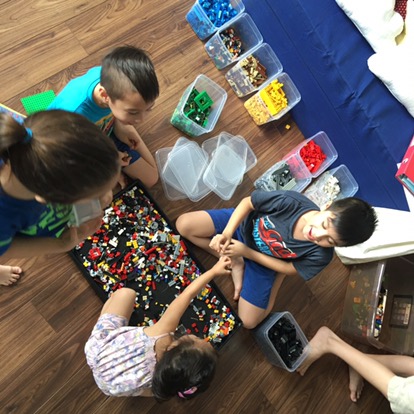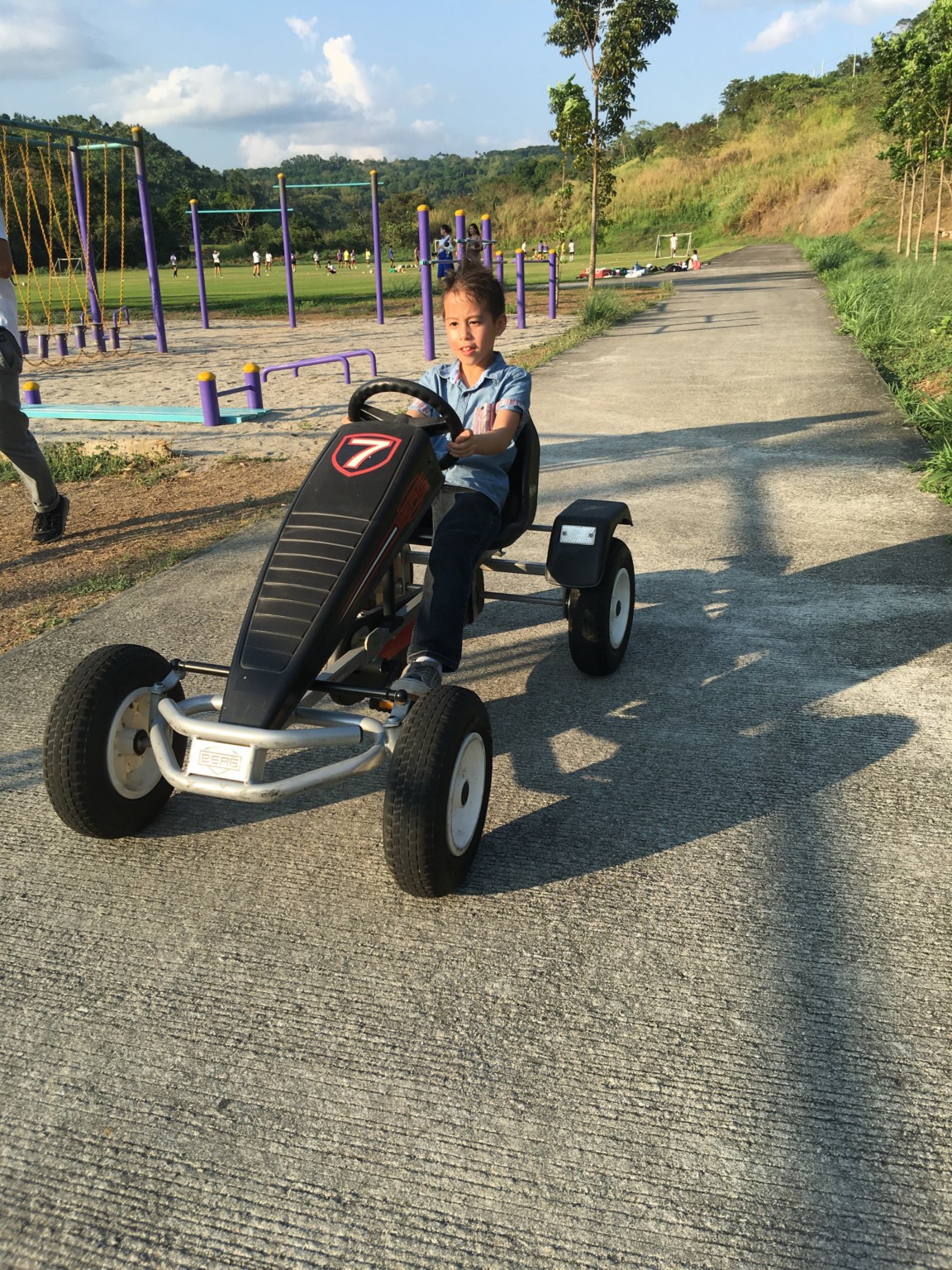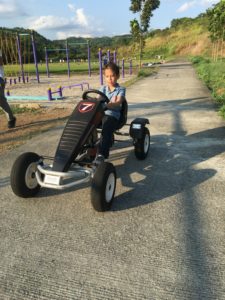“Many of our greatest thinkers locate their capacity for original and profound thought in their imaginative abilities, first developed through creative play in early childhood.” (Pittsburg Post Gazette, August 2004)
Interestingly, “Kids and animals that do not play when they are young may grow into anxious, socially maladjusted adults.” (Scientific American)
A lot of times we rob our children of the opportunity to play when we overschedule their lives or cram it full with academics and enrichment activities. A poll by HealthAmerica from 2006 revealed that out of 882 children, 41 percent between the ages of 9 and 13 felt stressed all of the time or most of the time, because they have too much to do. Of those same children surveyed, 78 percent wished they had more free time. (Ahchealthnews )
Although we may mean well as parents, we need to consider whether our children are getting sufficient time to enjoy the wonders of childhood. Do they get to play?
Play can be structured and unstructured. Structured play is defined by set goals and objectives determined by an adult. It is adult-directed. (For example, when I teach my child how to build a tower with blocks and instruct them which piece to put where.) In contrast, unstructured play has no specific goal or objective determined by an adult. It is child-directed. Give your child blocks and see what he or she does with them.
Both types of play are important. Structured play is beneficial when your aim is to teach your child new concepts, skills, and reinforce them (colors, shapes, numbers, letters, phonetic sounds, reading, etc.) But unstructured play is beneficial for the application and manipulation of those concepts and skills – to demonstrate and practice creativity…and, well, just enjoy being a kid!
Another area where we may short-change our children is when we buy them the wrong kinds of toys. Since our children were very little, my husband and I agreed that we would buy our kids “good toys,” and avoid battery-operated toys as much as possible. Some people still gift our kids with these sort of toys but we try not to purchase them ourselves.
“A good toy is 10 percent toy and 90 percent child,” says Joan Almon, director of the U.S. Alliance for Childhood. “Beware of killjoy toys. Give children simple play materials such as logs and stones, cloths and ropes, and they will create worlds.”
“Play starts with a box, with the discovery of pots and pans. If everything has bells and whitles and does everything for them from the time a child is very young (his) own imagination is not going to be very stimulated,” says Stevanne Auerbach, a.k.a Dr. Toy and author of Smart Play, Smart Toys: How to raise a child with high PQ.
Some of examples of good toys include:
- Empty boxes (shoe boxes, big boxes, etc.)
- Toilet paper rolls
- Tissue paper
- Fabric
- Rocks
- Sticks
- Sand or mud
- Trees
- Leaves
- Puddles or water
- Bugs
- Rope or string
- Dolls for girls
- Dishes and tea sets
- Blocks
- Legos
- Playdough or clay
- Marbles
- Magnets
- Old clothes for dressing up
- Paper, drawing materials, paint, etc.
My kids go crazy over things like empty boxes and string! This afternoon my girls were running around with sticks, and my older daughter said, “Look, it’s an airplane!”, as she made the stick fly through the air.
So much learning happens through play. It may not be as quantifiable as results on a test paper, but rest assured, children are picking up something valuable.
“Play is how children begin to understand and process their world. Children’s play unlocks their creativity and imagination and develops reading, thinking, and problem solving skills as well as further develops motor skills. It provides the base foundation for learning.” Angie Rupan, Program Coordinator for Child Development Center in South San Francisco, CA and early childhood educator for over 20 years.
When we play with our kids, or when children play with one another, their language skills are developed. They pick up vocabulary, learn how to express themselves in ways that others can understand, and decode the grammatical structure of the English language without even realizing it!
 When children are given unstructured play-time, their creativity sores. They learn how to be imaginative, invent, solve problems, build, and entertain themselves without being dependent on others to tell them what to do or how to think. Even simple toys like building blocks enhances mathematical ability in children.
When children are given unstructured play-time, their creativity sores. They learn how to be imaginative, invent, solve problems, build, and entertain themselves without being dependent on others to tell them what to do or how to think. Even simple toys like building blocks enhances mathematical ability in children.
My kids were trying to figure out how to build a suspension bridge the other day. They had to think through the physics involved to make this bridge.
Activities like drawing, painting, stringing, folding, cutting, squeezing dough or clay and molding it are all beneficial for fine motor skills. And activities that involve running, jumping, climbing, kicking, and the like will build muscular strength and endurance which are necessary for more difficult tasks that require body coordination.
What’s our part in all of this as parents? How do we ensure that learning happens when our children play? The following elements must be present:
- Children feel free to express themselves
- Children’s opinions are valued
- Children believe they are unconditionally loved and accepted
- Children are allowed to fail and learn from their failures
- Children are allowed to experiment and try new ideas
- Children are encouraged to consider more than one solution to a problem
- Discipline is firm but not punitive
- Parents accept some mess
- Parents appreciate what their children accomplish and achieve
- Parents communicate confidence in their children’s abilities
- Parents demonstrate their own creativity and flexibility
- Children are exposed to storybooks and storytelling
- Make-believe is encouraged
- Children have regular contact with parents and other children (siblings and cousins count, too!)
I don’t know what your family culture is like, but I hope you will prioritize playtime. It’s a necessary and fundamental part of childhood, and it’s our responsibility as parents, to provide a home environment where play is valued and encouraged. It’s time for our kids to play!




Seriously, Joy – I wish more people understood this!! It seems like a philosophy of child rearing that is for the hippies, but there is so much good research to indicate these ideas are true. I commend you for writing this post and going against the grain. Preach on, sister!!
– Joanna (from Surrey, Canada)
Thanks, Joanna! The joy I see in my children is one of the reasons why I think play works, too. They are enjoying their childhood. Such precious years, and such a short season in the grand scheme of their lives. They deserve to have time to play!
Thanks for your generous heart by sharing what you know. It is quite a help. God bless
Your post enlightened me. I’ll make sure not to get in the way of my children’s playtime from now on. Rather, I’ll support them and provide space and some of the good toys you suggested where they can let their imagination soar. Thank you and God bless!
You are very welcome!!! 🙂
You are very welcome!!! 🙂
Hi Joy! I just want to ask where is the location of the first picture with Titus on the go-kart? Thanks a lot!
That’s in a place called Sun Valley in Antipolo 🙂